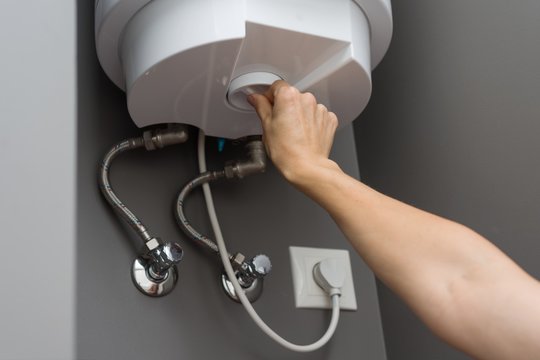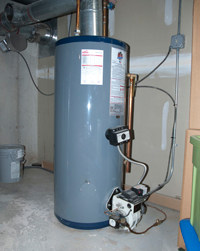Best Practices for Caring for Your Home's Hot Water System
Best Practices for Caring for Your Home's Hot Water System
Blog Article
How do you really feel about Water Heater Maintenance Tips You Can't Afford to Forget?

Hot water is essential for day-to-day convenience, whether it's for a rejuvenating shower or washing recipes. To guarantee your warm water system runs efficiently and lasts longer, normal maintenance is key. This write-up offers practical tips and understandings on exactly how to maintain your home's warm water system to avoid disturbances and expensive repair services.
Introduction
Maintaining your home's warm water system may seem complicated, however with a few easy steps, you can guarantee it runs efficiently for many years to come. This guide covers every little thing from comprehending your warm water system to DIY upkeep suggestions and recognizing when to employ specialist help.
Relevance of Preserving Your Warm Water System
Regular upkeep not only expands the life expectancy of your warm water system but additionally ensures it runs successfully. Overlooking maintenance can cause lowered effectiveness, greater power bills, and also premature failing of the system.
Indicators Your Hot Water System Requirements Upkeep
Knowing when your warm water system requires interest can prevent significant issues. Keep an eye out for indications such as irregular water temperature, strange sounds from the heating system, or rustic water.
Recognizing Your Warm Water System
Prior to diving into maintenance tasks, it's practical to understand the fundamental parts of your warm water system. Generally, this consists of the hot water heater itself, pipelines, anode poles, and temperature controls.
Regular Monthly Upkeep Tasks
Routine month-to-month checks can help catch small problems prior to they intensify.
Flushing the Hot Water Heater
Flushing your water heater removes debris buildup, enhancing performance and prolonging its life.
Checking and Replacing Anode Rods
Anode poles prevent deterioration inside the storage tank. Examining and changing them when worn out is crucial.
Examining and Adjusting Temperature Settings
Changing the temperature setups makes certain optimal efficiency and safety and security.
Do It Yourself Tips for Upkeep
You can do numerous maintenance jobs on your own to keep your hot water system in top condition.
Looking for Leaks
On a regular basis evaluate pipes and links for leaks, as these can bring about water damages and higher expenses.
Testing Pressure Relief Valves
Evaluating the stress relief valve ensures it works appropriately and stops extreme stress buildup.
Shielding Pipelines
Shielding warm water pipes minimizes warm loss and can conserve energy.
When to Call a Professional
While DIY upkeep is valuable, some issues need professional knowledge.
Facility Problems Needing Specialist Aid
Instances consist of major leaks, electric problems, or if your water heater is regularly underperforming.
Routine Professional Maintenance Conveniences
Expert upkeep can include thorough inspections, tune-ups, and ensuring compliance with security requirements.
Conclusion
Normal maintenance of your home's hot water system is crucial for performance, long life, and expense financial savings. By adhering to these ideas and understanding when to seek expert assistance, you can make sure a reputable supply of warm water without unforeseen interruptions.
Water Heater Maintenance: The Basics
Maintaining your water heater will ensure it operates efficiently and has a longer lifespan. Neglecting regular maintenance can lead to costly repairs and an even bigger chunk of your savings if you have to replace it sooner than necessary. But there’s good news: Most water heater maintenance tasks are relatively simple and easy for homeowners with basic DIY skills.
Flush the Water Heater
Over time, sediment and minerals can build up in the tank, reducing its efficiency and potentially causing damage. To flush the tank, turn off the power or gas supply, attach a hose to the drain valve near the bottom and open the valve to drain the water until it runs clear. Ideally, flush the tank annually.
Replace the Anode Rod
The anode rod is a sacrificial metal rod that helps prevent corrosion inside the tank. Inspect and replace it every three to five years or per the manufacturer's recommendation. To replace the anode rod, turn off the power or gas supply, drain a few gallons of water from the tank, unscrew the old rod and replace it with a new one. If the anode rod is significantly corroded or covered in calcium buildup, it's a sign the water heater may need to be replaced soon.
Tune-Up
A yearly tune-up can help identify potential issues and ensure your water heater operates at peak efficiency. This typically involves checking the thermostat, burner assembly (for gas heaters) and any other components specified by the manufacturer. During a tune-up, the technician may also clean the burner and adjust the pilot light (for gas heaters) or examine the heating elements (for electric heaters).
How to Maintain Your Water Heater
Insulate the tank. Insulating the tank can improve energy efficiency and reduce heat loss, saving you money on energy bills. You can purchase precut insulation blankets designed specifically for water heaters or use standard fiberglass insulation wrapped securely around the tank. Check the temperature. The recommended water temperature for most households is around 120 degrees Fahrenheit (49 degrees Celsius). Higher temperatures can increase energy costs and potentially cause scalding. Use a kitchen thermometer to check the temperature at the faucet nearest the water heater. Monitor water pressure. Excessive water pressure can strain the water heater and cause leaks or even tank failure. Install a pressure-reducing valve if necessary. The ideal water pressure range is between 60 and 70 PSI (pounds per square inch). Test the temperature and pressure (T&P) relief valve. The T&P relief valve is a safety feature that releases pressure if the tank gets too hot or the pressure builds up too high. Test it annually by lifting the lever and allowing a small amount of water to release. Replace the valve if it doesn't release water or reseal properly. Check for leaks. Regularly inspect the tank, pipes and fittings for leaks or corrosion. Deal with issues promptly to prevent further damage. Even a small leak can lead to significant water damage over time. Consider a tankless water heater. If your traditional tank-style water heater is nearing the end of its lifespan ( typically 10 years), consider replacing it with a tankless water heater. These units heat water on demand, reducing standby energy losses and potentially saving you money on your energy bills. Schedule professional maintenance. While homeowners can perform many water heater maintenance tasks, it's still a good idea to schedule professional maintenance every few years. A plumber or HVAC technician can thoroughly inspect the unit, identify potential issues and ensure it operates safely and efficiently. https://www.homeserve.com/en-us/blog/home-improvement/hot-water-heater-maintanence/

I'm just very drawn to How to Maintain a Hot Water Heater in a Few Simple Steps and I'm hoping you liked my piece. Are you aware of another individual who is truly interested in the subject? Be sure share it. Thanks so much for taking the time to read it.
Call Today Report this page